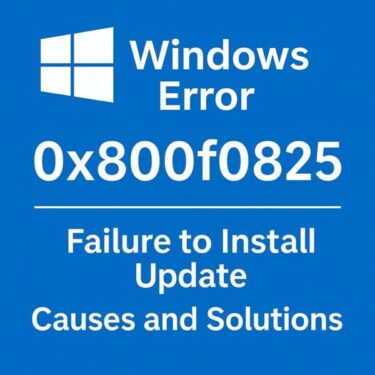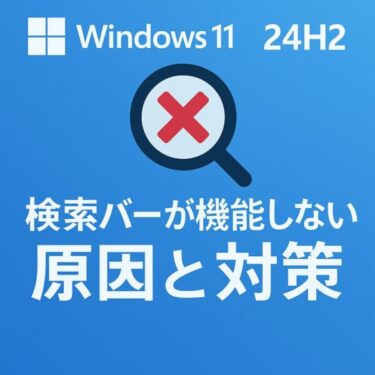Are you seeing the Windows Update error code 0x800705b4 over and over again?
You’re not alone. This code is frustrating, but in most cases it can be fixed without reinstalling Windows.
In this guide, we’ll walk through:
- What error
0x800705b4actually means - Why it appears on Windows 10 and Windows 11
- Step-by-step fixes, from easy to advanced
- When you should consider manual updates or a clean install
Even if you’re not a “PC expert,” you can follow these steps safely. Let’s get started.
- 1 🔍 What does error code 0x800705b4 mean?
- 2 🧱 Before you start: basic checks
- 3 🛠 Quick fixes you should try first
- 4 🔧 Advanced repair methods (when quick fixes aren’t enough)
- 4.1 4. Reset the Windows Update folders (SoftwareDistribution & Catroot2)
- 4.2 5. Repair system files with SFC and DISM
- 4.3 6. Check disk integrity with CHKDSK
- 4.4 7. Turn off “receive updates for other Microsoft products”
- 4.5 8. Scan your system for malware
- 4.6 9. Consider an in-place repair (repair install)
- 5 🔁 Final options: manual updates or clean install
- 6 💡 Why it’s important to fix error 0x800705b4
- 7 ✅ Quick summary
🔍 What does error code 0x800705b4 mean?
Error 0x800705b4 usually appears with messages like:
- “There were some problems installing updates…”
- “Some updates were not installed.”
Technically, 0x800705b4 is a timeout error.
It means Windows Update waited for a process to finish (such as a scan, download, or verification), but it took too long or got blocked. Common reasons include:
- Windows Defender or a third-party antivirus blocking the update
- Corrupted Windows Update cache files
- System files damaged by previous crashes or power cuts
- Disk or file system errors
- Network issues (unstable Wi-Fi, proxy, VPN, etc.)
The good news: in most cases you can fix it by resetting update components and repairing system files—no need to wipe your PC.
🧱 Before you start: basic checks
Before jumping into detailed repair steps, quickly check these:
- Restart your PC once
A simple reboot can release stuck processes and complete pending updates. - Check your internet connection
If your connection is unstable or you’re using a VPN/proxy, try a direct connection and then re-run Windows Update. - Free up disk space
On the system drive (usuallyC:), try to keep at least 10–20 GB free.
Delete temporary files, old downloads, or unused apps if space is low. - Check Date & Time
Go to Settings → Time & language → Date & time and turn on Set time automatically and Set time zone automatically if available.
If everything looks fine but the error persists, continue with the steps below.
🛠 Quick fixes you should try first
1. Run the Windows Update troubleshooter
Windows includes a built-in tool that automatically checks and fixes common update issues.
On Windows 11
- Open Settings.
- Go to System → Troubleshoot → Other troubleshooters.
- Find Windows Update and click Run.
- Follow the on-screen instructions and apply any suggested fixes.
- Restart your PC and try Windows Update again.
On Windows 10
- Open Settings.
- Go to Update & Security → Troubleshoot → Additional troubleshooters.
- Select Windows Update → Run the troubleshooter.
- Apply the suggested fixes, restart, and retry the update.
For many users, this alone clears error 0x800705b4.
2. Temporarily disable antivirus and firewall
Sometimes security software blocks the update process or delays it until Windows times out.
⚠️ Important: Only disable protection temporarily and do not browse suspicious websites or open unknown files while it’s off.
- If you use a third-party antivirus, open its settings and temporarily disable:
- Real-time protection
- Web protection
- Firewall (if it includes one)
- For Windows Defender Firewall, you can turn it off temporarily from
Control Panel → System and Security → Windows Defender Firewall → Turn Windows Defender Firewall on or off. - Run Windows Update again.
- Once the update finishes (or fails with a different error), turn all protections back on.
If updates work only when antivirus is disabled, you may need to:
- Update the antivirus to the latest version, or
- Add Windows Update processes to its exclusions, or
- Consider switching to another solution.
3. Restart Windows Update services
Sometimes the Windows Update services simply get “stuck.” Restarting them can clear temporary issues.
- Press Start, type cmd.
- Right-click Command Prompt and choose Run as administrator.
- In the Command Prompt window, run these commands one by one:
net stop wuauserv
net stop cryptSvc
net stop bits
net stop msiserver
net start wuauserv
net start cryptSvc
net start bits
net start msiserver
After all services have restarted, close the window and try Windows Update again.
If the error still appears, move on to deeper repairs.
🔧 Advanced repair methods (when quick fixes aren’t enough)
If you still see 0x800705b4, there may be corruption in the update cache or in system files. Work through the steps below in order.
4. Reset the Windows Update folders (SoftwareDistribution & Catroot2)
Windows stores update files in two special folders:
C:\Windows\SoftwareDistributionC:\Windows\System32\catroot2
If these folders contain corrupted or incomplete files, Windows Update can repeatedly fail with various errors, including 0x800705b4.
We can safely rename them so Windows creates fresh copies.
💡 Don’t delete the folders manually from File Explorer. Renaming them via Command Prompt is safer and reversible.
- Open Command Prompt as Administrator (search for
cmd, right-click → Run as administrator). - Stop the update-related services:
net stop wuauserv
net stop cryptSvc
net stop bits
net stop msiserver
- Rename the folders:
ren C:\Windows\SoftwareDistribution SoftwareDistribution.old
ren C:\Windows\System32\catroot2 catroot2.old
- Start the services again:
net start wuauserv
net start cryptSvc
net start bits
net start msiserver
- Close Command Prompt and try Windows Update once more.
Windows will create new, clean versions of these folders, which often resolves update timeouts and download issues.
5. Repair system files with SFC and DISM
If core Windows files are damaged, updates may never complete successfully until they are repaired.
We’ll use two tools:
- SFC (System File Checker) – scans and repairs system files.
- DISM – fixes the underlying Windows image used by SFC.
- Open Command Prompt as Administrator.
- First run DISM (this can take a while):
DISM.exe /Online /Cleanup-Image /RestoreHealth- When DISM completes, run SFC:
sfc /scannow- Wait for the scan to reach 100%.
- If it reports that corrupt files were found and repaired, restart your PC.
- After the restart, run Windows Update again.
⏳ These scans can take several minutes or longer. Don’t close the window or shut down your PC while they’re running.
6. Check disk integrity with CHKDSK
Hard drive or SSD errors can also cause update failures and timeouts.
- Open Command Prompt as Administrator.
- Type the following command and press Enter:
chkdsk C: /r- If Windows says the drive is in use and asks to schedule the scan at the next restart, type
Yand press Enter. - Restart your PC. The disk check will run before Windows loads.
The process may take some time, especially on large or slower drives. Once it finishes and Windows starts, try Windows Update again.
7. Turn off “receive updates for other Microsoft products”
On some systems, having updates for Office or other Microsoft products enabled can complicate or slow down Windows Update.
You can try disabling it temporarily:
- Open Settings → Windows Update.
- Look for Advanced options.
- Turn off the option like “Receive updates for other Microsoft products”.
- Click Check for updates again.
If updates work after this, you can later re-enable the option.
8. Scan your system for malware
Malware or unwanted “optimizer” tools can interfere with Windows Update and security services.
To run a full scan with Microsoft Defender:
- Open Settings → Privacy & security → Windows Security.
- Click Virus & threat protection.
- Choose Scan options.
- Select Full scan and click Scan now.
If Defender or your antivirus finds threats, remove them, restart your PC, and try Windows Update again.
9. Consider an in-place repair (repair install)
If you’ve tried everything above and 0x800705b4 still appears, you may be dealing with deeper system corruption.
A powerful—but less destructive—option is an in-place repair install of Windows:
- You download the latest Windows installation media
- Run Setup from within Windows
- Choose “Keep personal files and apps”
This reinstalls core Windows components while keeping your data and programs.
It takes time, but it’s often enough to fix stubborn update errors without a full wipe.
(If you’re not comfortable with this step, consider asking a knowledgeable friend or technician to assist.)
🔁 Final options: manual updates or clean install
If all previous methods fail, you still have two last-resort options.
Option 1: Manually download and install a specific update
- Note the KB number of the update that keeps failing (for example,
KB5068861). - Visit the Microsoft Update Catalog.
- Search for the KB number.
- Download the installer that matches your system (Windows version and architecture – x64/ARM64).
- Run the downloaded
.msuor.cabfile to install the update manually. - Restart your PC and check Windows Update again.
Option 2: Clean install of Windows (last resort)
If even manual updates refuse to install and your system is unstable, a clean installation will almost always solve the problem—but it requires more preparation.
- Back up all important files (documents, photos, browser data, game saves, etc.) to an external drive or cloud storage.
- Create a Windows installation USB using the official Media Creation Tool.
- Boot from the USB and perform a clean install of Windows.
- Reinstall your apps and restore your files from backup.
⚠️ A clean install removes your installed programs and settings.
Only choose this if you’ve tried everything else or your system is already in bad shape.
💡 Why it’s important to fix error 0x800705b4
Ignoring Windows Update errors isn’t just annoying—it can be risky:
- You may miss critical security patches, leaving your PC vulnerable.
- Compatibility fixes and driver updates may never arrive.
- Over time, small update problems can snowball into bigger system issues.
The good news:
Most users can resolve error 0x800705b4 by:
- Running the Windows Update troubleshooter
- Restarting update services and resetting the SoftwareDistribution/Catroot2 folders
- Repairing system files with DISM + SFC
Only a minority of cases require repair installs or clean installations.
✅ Quick summary
0x800705b4is a timeout error that often appears during Windows Update.- Common causes: security software interference, corrupted update cache, damaged system files, disk errors, or unstable network.
- Start with:
- Windows Update troubleshooter
- Restarting Windows Update services
- Temporarily disabling antivirus/firewall
- If that doesn’t help, move on to:
- Resetting
SoftwareDistributionandCatroot2 - Running DISM and SFC
- Checking the disk with CHKDSK
- Resetting
- As a last resort:
- Manually install updates from the Microsoft Update Catalog, or
- Perform a repair install / clean install of Windows after backing up your data.
If you’re still stuck after trying these steps, don’t hesitate to ask for help.
Describe which step you reached, what message you saw, and which Windows version you’re using—that makes it much easier to find the next best solution.
🔗 Related Windows guides
▶︎ Fixing Windows 11 Update KB5058411: Common Errors and Solutions
▶︎ Fix Error 0x800f0825: Windows Update Failed to Install
▶︎ Black, flickering, or frozen screen? Your ultimate guide to fixing Windows display issues


